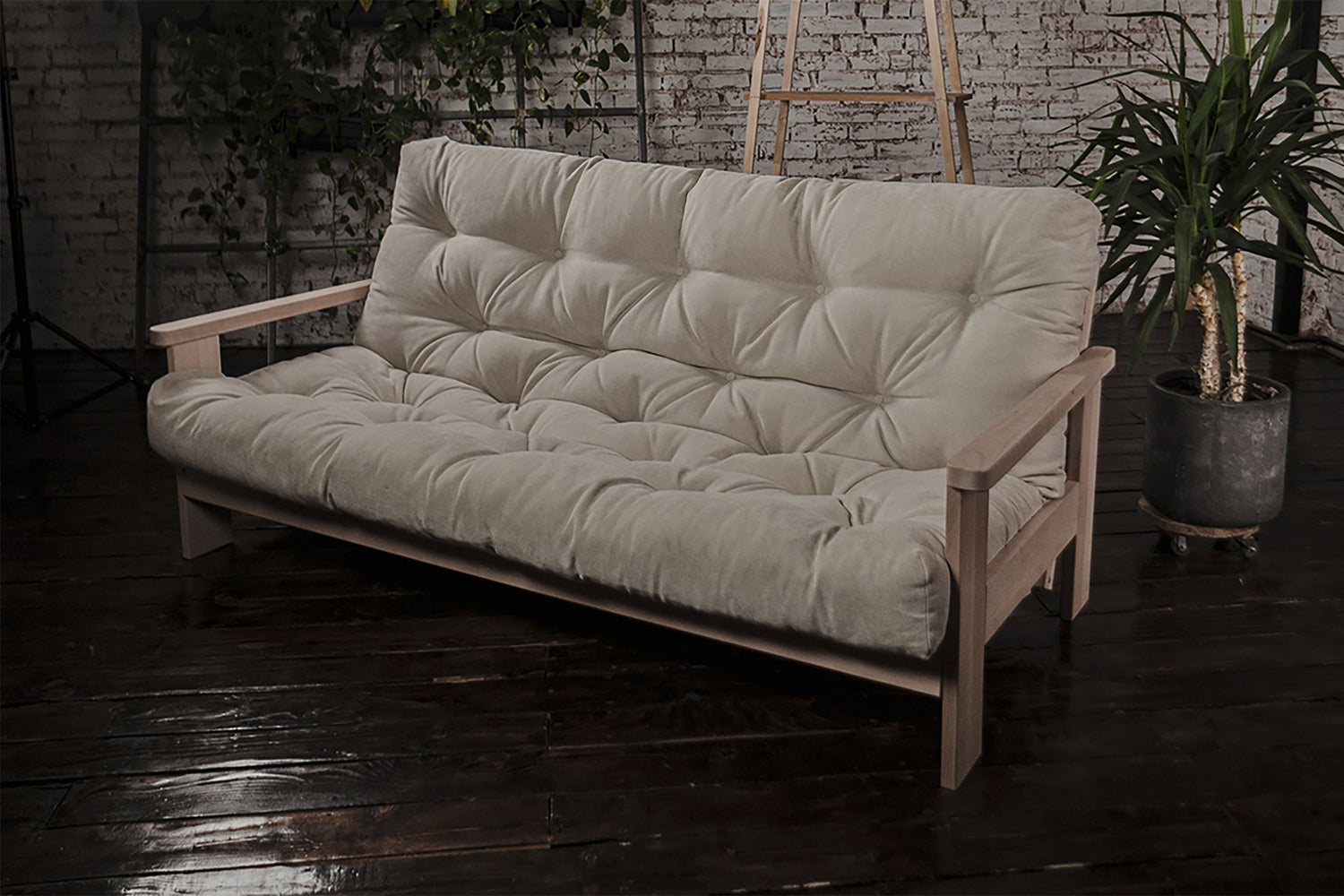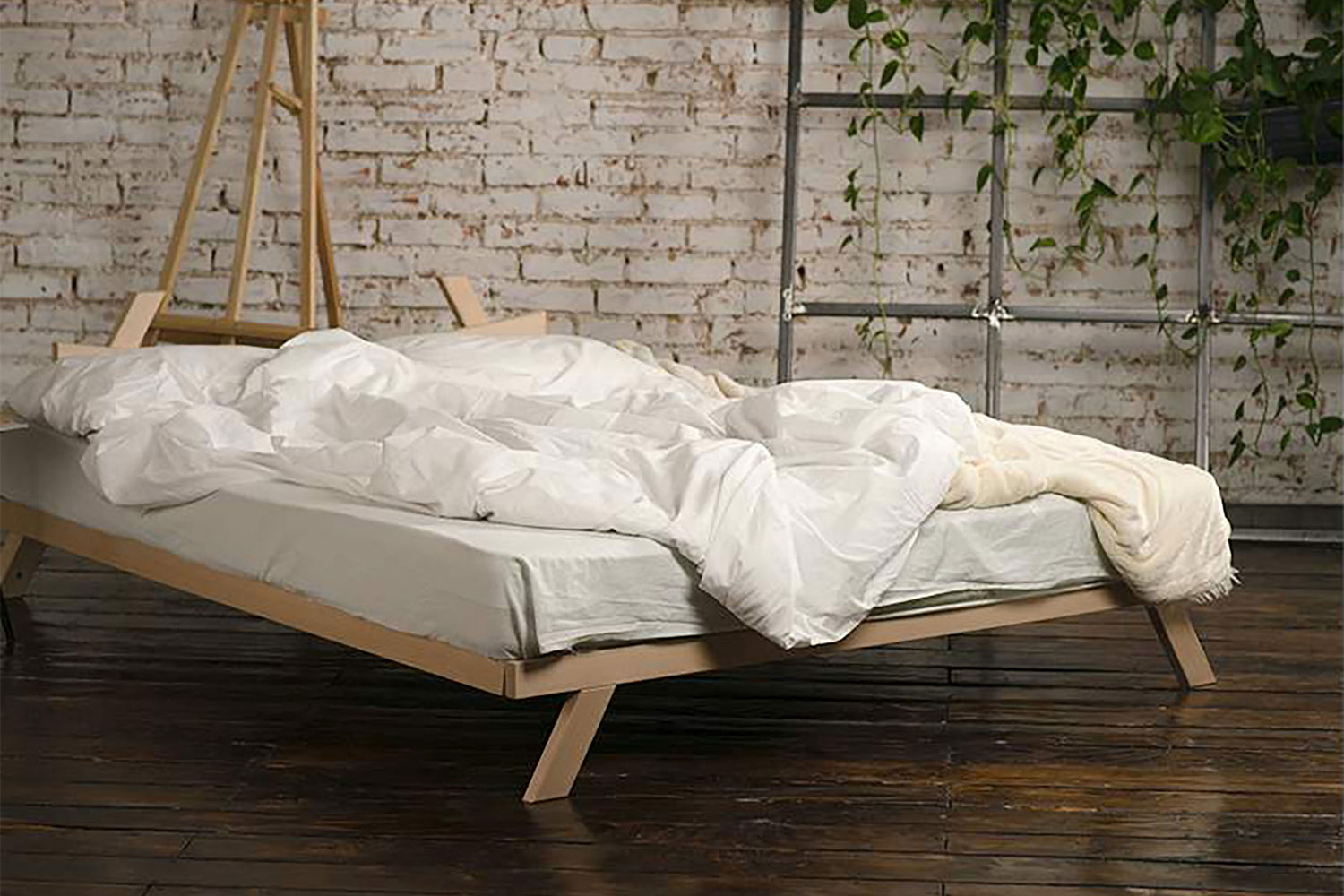
Can You Use the Japanese Mattress on the Floor?
Share
In recent years, the minimalist and holistic Japanese sleep system has gained attention worldwide. At its heart lies the shikibuton—a versatile, traditional Japanese futon mattress designed to be used directly on the floor or on a tatami mat. This elegant and practical sleep solution has been celebrated for centuries for its simplicity and numerous health benefits. Let’s explore what makes the shikibuton a distinctive and highly regarded element of the Japanese lifestyle.
What Is a Shikibuton?
A shikibuton, also referred to as a Japanese floor mattress, is a lightweight, foldable mattress crafted from natural materials like cotton or wool. Unlike Western-style futons, the shikibuton is typically thinner and designed to be used directly on the floor or atop tatami mats, which are traditional Japanese floor coverings made from rice straw.
The shikibuton is often paired with a kakebuton (a duvet) and a tatami mat to complete the Japanese sleep system. Together, they create a comfortable and breathable sleeping environment that aligns with the body’s natural posture.

Benefits of Sleeping on a Floor Bed
1. Better Spinal Alignment
The firm surface provided by a cotton shikibuton encourages natural spinal alignment, reducing back pain and improving posture. Many people who transition to a Japanese floor mattress report experiencing relief from chronic back issues.
2. Space-Saving and Versatile
Shikibutons are designed to be folded and stored during the day, making them ideal for small living spaces. This versatility also allows the sleeping area to double as a functional living or workspace.
3. Enhanced Air Circulation
Natural materials like cotton and wool used in shikibutons promote airflow, keeping the mattress fresh and reducing the risk of mold or mildew.
4. Eco-Friendly and Sustainable
Shikibutons are often made from organic, biodegradable materials, making them an environmentally friendly alternative to synthetic mattresses.
5. Cultural and Aesthetic Appeal
Incorporating a shikibuton into your home can add a touch of Japanese-inspired minimalism and elegance to your space.
How to Use a Mattress on the Floor
Placement
Traditionally, a Japanese shikibuton is laid directly on the floor or on a tatami mat for additional cushioning and insulation. If you’re wondering, “Can you put a Japanese futon directly on a bed frame?” the answer is yes—but it’s best suited for low-profile or slatted bed frames that mimic the floor’s firmness.
Storage
During the day, a shikibuton can be folded into thirds and stored in a closet or dedicated futon cabinet. This practice helps preserve the mattress and frees up space for other activities.
Maintenance
To keep your shikibuton fresh and hygienic, it’s recommended to:
- Air it out regularly to prevent moisture buildup.
- Beat it lightly to remove dust and restore its loft.
- Use a futon cover to protect it from spills and stains.

Shikibuton vs. Kakebuton
While the shikibuton is the base mattress for sleeping, the kakebuton serves as a duvet or comforter. Both are integral parts of the Japanese sleep system, with the kakebuton providing warmth and comfort during cooler months. The combination of these elements ensures a complete and balanced sleeping experience.
Shikibuton and Tatami: A Perfect Pair
Tatami mats are an essential companion to shikibutons, offering additional cushioning and insulation. They’re also naturally antimicrobial, which helps maintain a clean sleeping environment. Sleeping on a tatami mat with a shikibuton can enhance the benefits of the Japanese sleep system, including better back support and temperature regulation.
The Health Benefits of Japanese Sleeping on the Floor
The Japanese tradition of sleeping on the floor is rooted in centuries of cultural and health practices. Some of the key advantages include:
- Improved Posture: The firm surface encourages proper alignment of the spine.
- Reduced Allergens: Elevating the mattress off the floor during the day minimizes dust and allergens in the sleeping area.
- Grounding Effect: Many people find that sleeping closer to the ground promotes a sense of connection to nature and reduces stress.
Modern Adaptations and Uses
While the traditional Japanese sleep system remains timeless, modern adaptations of the shikibuton have made it more accessible for global audiences. Today, you can find shikibutons that cater to various preferences, such as thicker options for added comfort or hypoallergenic materials for sensitive sleepers.
Common Questions About Shikibutons
Do Japanese Sleep on the Floor?
Yes, it is a longstanding tradition in Japan to sleep on shikibutons placed directly on the floor or tatami mats. This practice is both cultural and practical, aligning with minimalist living principles.
Are Japanese Futons Good for Your Back?
Absolutely. The firm support provided by shikibutons promotes spinal alignment and can alleviate back pain over time.
How Long Should a Shikibuton Be Aired Out?
To maintain freshness, it’s recommended to air out your shikibuton for a few hours every week. Sunlight exposure helps eliminate moisture and prevents mold.
Can You Use a Shikibuton on a Bed Frame?
Yes, a shikibuton can be used on a low-profile or slatted bed frame. However, pairing it with a tatami mat on the floor provides the most authentic experience.
Final Thoughts: Is a Shikibuton Right for You?
A shikibuton offers a unique blend of tradition, functionality, and health benefits. Whether you’re looking to adopt a minimalist lifestyle, improve your sleep posture, or embrace Japanese culture, this floor mattress is a versatile and rewarding choice. By incorporating a shikibuton into your home, you can experience the simplicity and elegance of the Japanese sleep system firsthand.
Explore our collection of shikibutons and tatami mats to find the perfect setup for your needs. Embrace the tradition and enjoy the benefits of sleeping closer to the earth.











